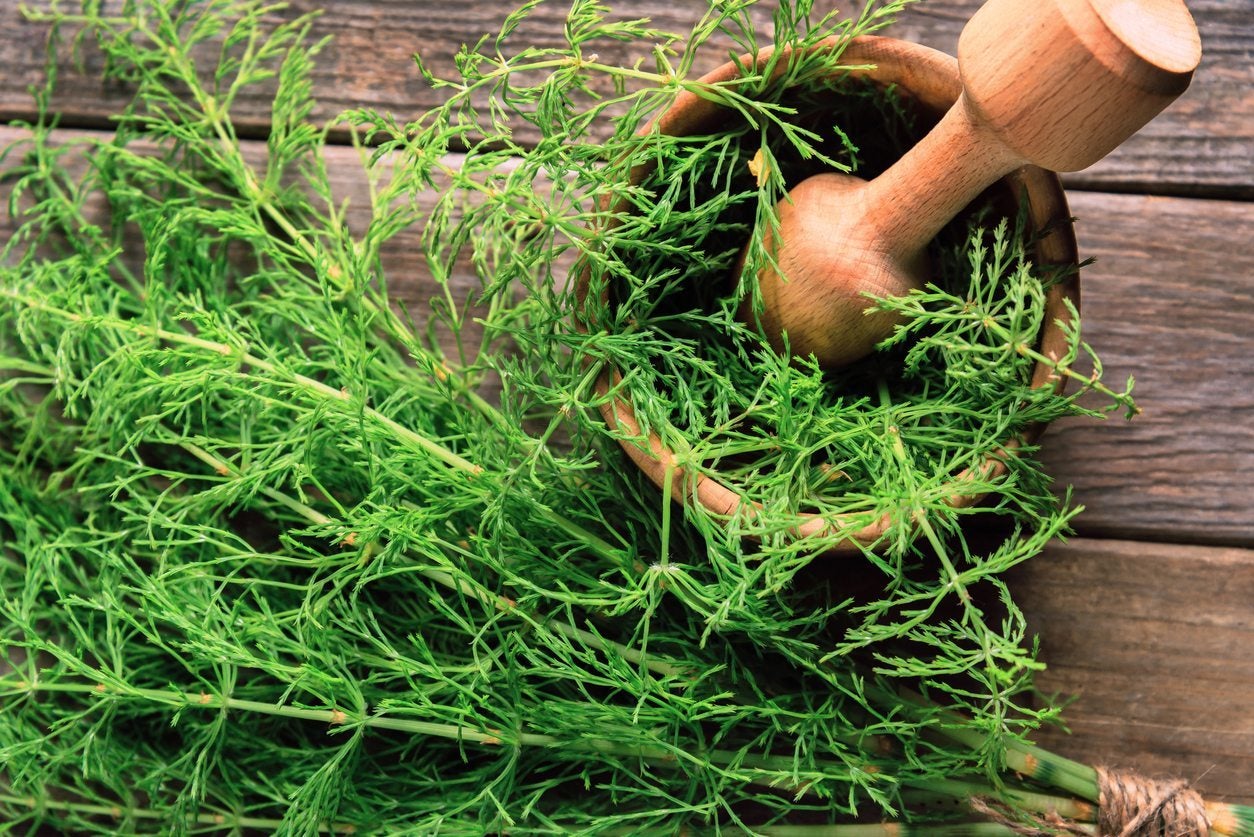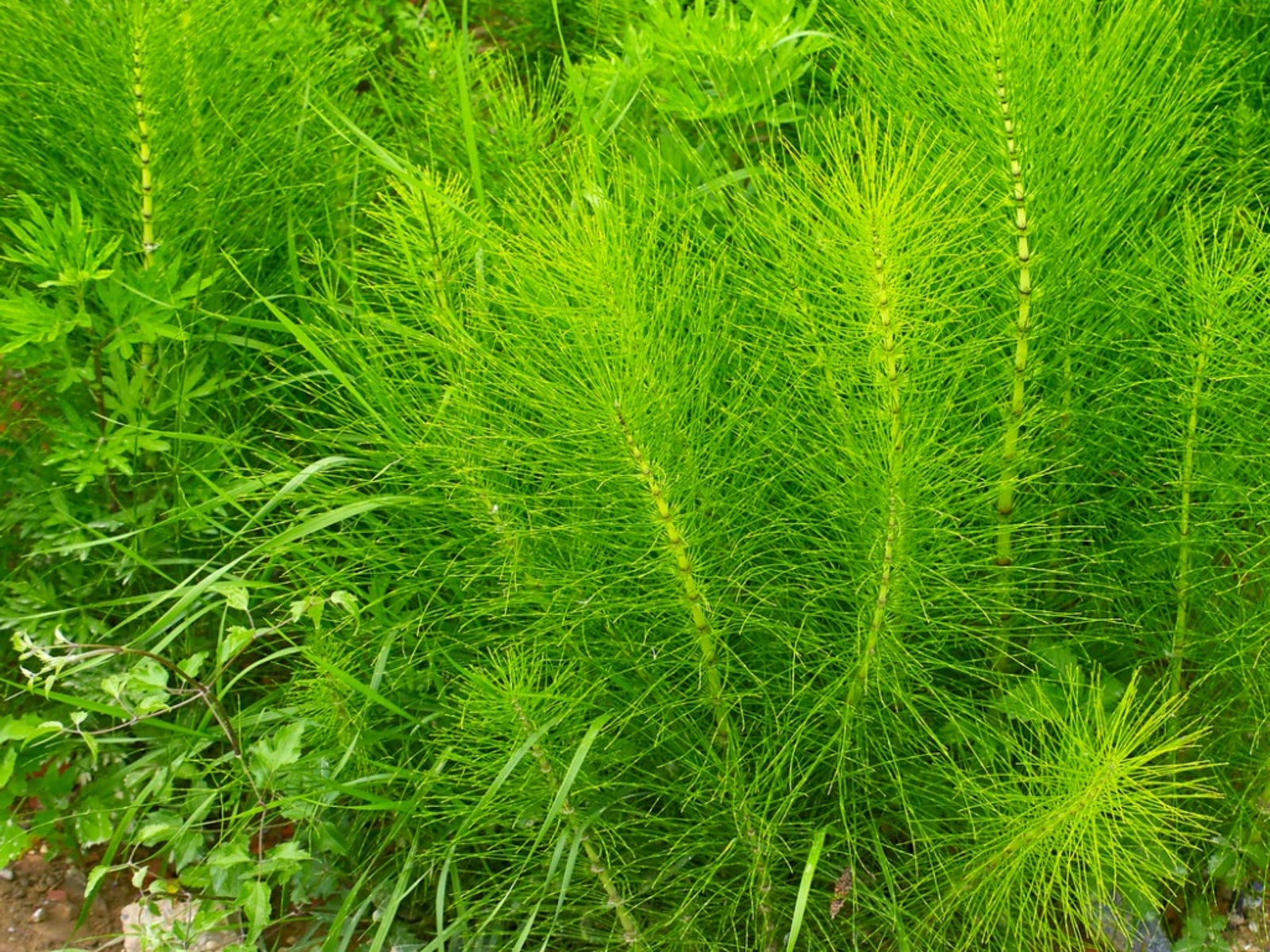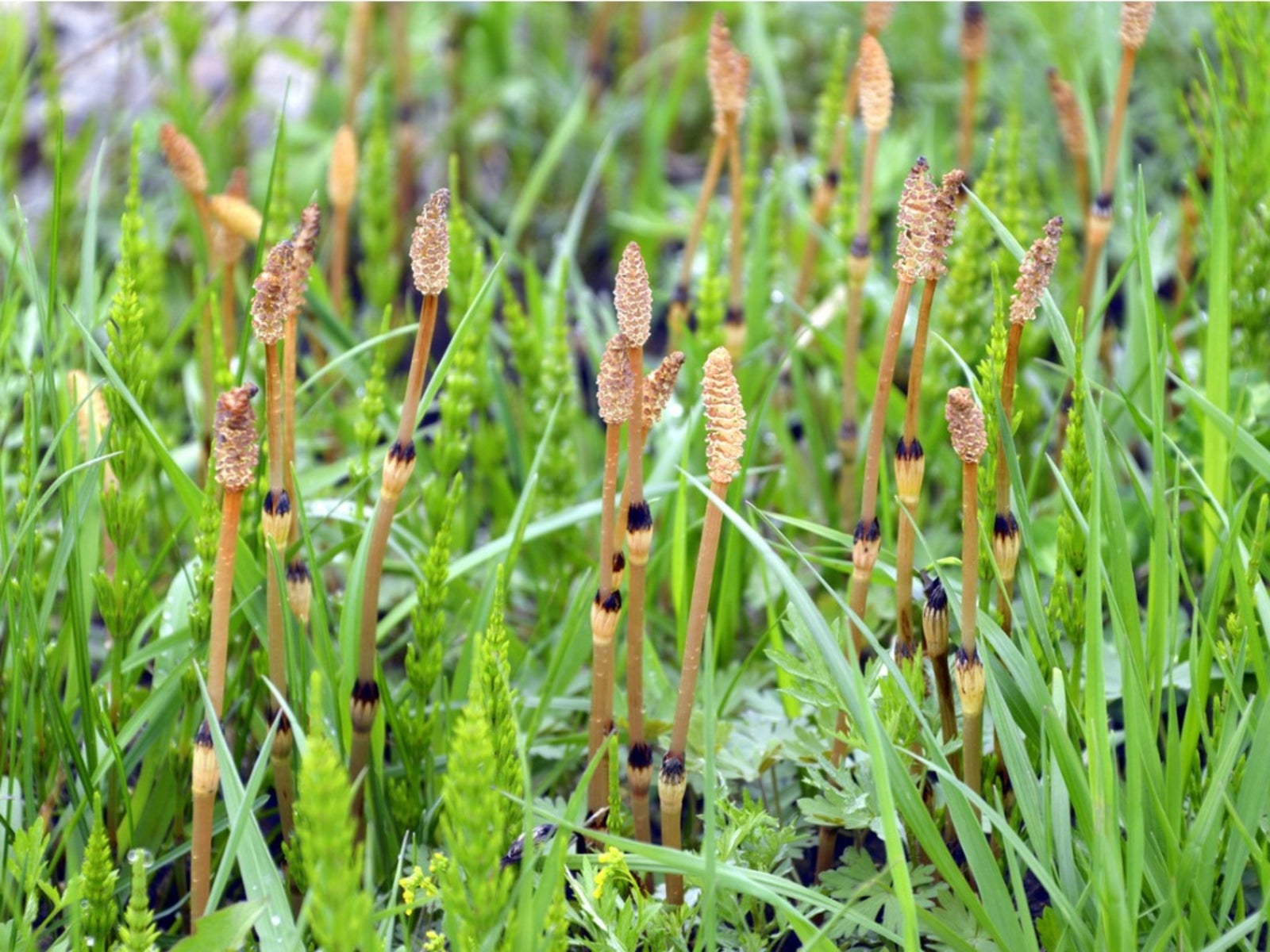How To Harvest Horsetail: Tips On Picking Horsetail Herbs


Horsetail (Equisetum spp.) is a perennial plant that grows across much of North America, Europe, the Middle East, and Asia. Also known as puzzle plant or scouring rush, horsetail is easy to recognize by its reedy, jointed stems. Many people enjoy picking horsetail herbs for its nutrient content. A horsetail plant’s taproots can reportedly reach depths of up to 150 feet (46 m.), which may explain why the plant is so rich in silica and other minerals found deep within the earth.
Reasons for Harvesting Horsetail Herbs
Horsetail herbs are 35 percent silica, one of the most abundant minerals on the planet. Silica may strengthen bones, nails, hair, skin, and teeth, as well as bodily tissues, membranes, and cell walls. It may also help the body absorb calcium and restore a healthy balance between calcium and magnesium. Herbalists believe horsetail may strengthen lungs, kidneys, and the bladder. It is valued for its diuretic, antibacterial, and anti-inflammatory properties and is used to treat bronchitis and chronic urinary tract infections.
When to Harvest Horsetail Plants
Below are some tips for when and how to harvest horsetail plants for herbal use in the garden: Tan stems: Harvest the tan stems as soon as they emerge in early spring, before they become tough and fibrous. The stems aren’t used for medicinal purposes, but they can be eaten raw. In fact, the tender stems were considered a delicacy among Native American tribes of the Pacific Northwest. Green tops: Harvest the green tops of horsetails plants a little later in spring when the leaves are bright green and pointing either straight up or out. Pinch the stems a few inches (8 cm.) above the ground. Don’t remove the entire plant; leave some in place for next year’s growth. Remove the papery brown covering and the top cone from the stems. Herbalists recommend that tea is the best way to use the herb. Otherwise, you can sauté the shoots or add them to soup. Fall harvest: You can also harvest horsetail in fall. The silica content is very high, but the shoots are too tough for any use other than tea.
Is Horsetail Toxic?
According to the American Society for the Prevention of Cruelty to Animals (ASPCA), one species of horsetail (Equisetum arvense) is toxic to horses and may cause weakness, weight loss, tremors, staggers, and even death. However, experts at the University of Maryland Medical Center advise that herbal remedies made from horsetail are safe for humans when used properly, but they recommend against long-term use. Take a vitamin if you use horsetail, as the herb may cause depletion of vitamin B1. Don’t use the herb if you have diabetes, kidney disease, gout, or if you are pregnant or breastfeeding. Disclaimer: The content of this article is for educational and gardening purposes only. Before using or ingesting ANY herb or plant for medicinal purposes or otherwise, please consult a physician or a medical herbalist for advice.
Gardening tips, videos, info and more delivered right to your inbox!
Sign up for the Gardening Know How newsletter today and receive a free copy of our e-book "How to Grow Delicious Tomatoes".

A Credentialed Garden Writer, Mary H. Dyer was with Gardening Know How in the very beginning, publishing articles as early as 2007.
-
 Grow ‘Karl Rosenfield’ Peony Plants For The Ultimate Frilly Border Beauties And Cut Flowers
Grow ‘Karl Rosenfield’ Peony Plants For The Ultimate Frilly Border Beauties And Cut FlowersFor frilly double magenta peony petals infused with a heady fragrance, grow ‘Karl Rosenfield’ peony plants. Here’s how to cultivate the ultimate plushy blooms
By Tonya Barnett
-
 10 Common Composting Problems That Can Spoil Your Garden Gold – Plus Easy Fixes
10 Common Composting Problems That Can Spoil Your Garden Gold – Plus Easy FixesLearn how to troubleshoot common composting issues before they ruin your stash – from bad smells and bugs to materials not breaking down as they should.
By Susan Albert
-
 Horsetail Herb Growing And Info: How To Grow Horsetail Herbs
Horsetail Herb Growing And Info: How To Grow Horsetail HerbsHorsetail may not be favored by all, but to some this plant is treasured. Horsetail herb uses are plentiful and caring for horsetail plants in the herb garden is easy. Read here to learn how to grow horsetail herbs.
By Susan Patterson
-
 Horsetail Plants: How To Get Rid Of Horsetail Weeds
Horsetail Plants: How To Get Rid Of Horsetail WeedsGetting rid of horsetail weed can be a nightmare once it?s become established in the landscape. So what are horsetail weeds? Read here to learn more about how to get rid of horsetail weed in gardens.
By Susan Patterson